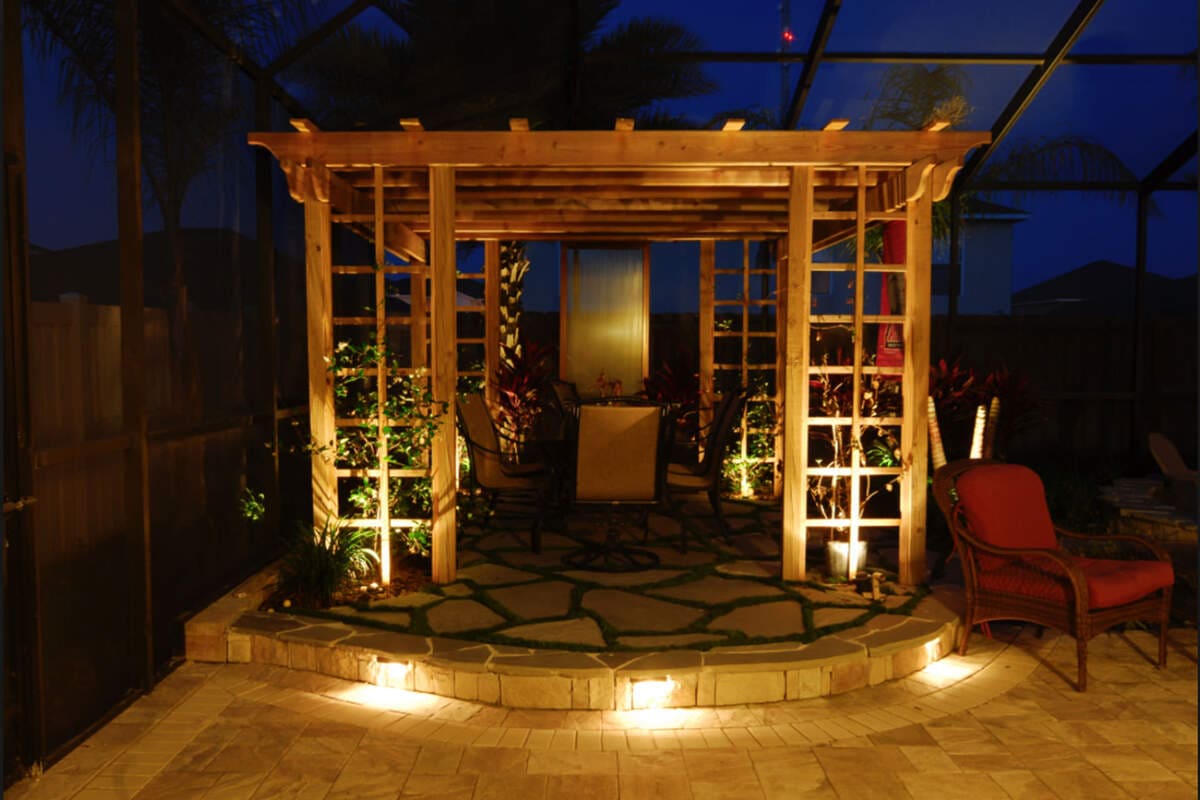Picture this: You’re out and about, enjoying life, when suddenly—disaster strikes. Your phone slips from your hand and plummets toward a puddle. Time seems to slow down, but fear not! With the right IP rating, your device emerges victorious from its watery brush with doom. But what is this magical rating system that separates fragile tech from the battle-hardened gadgets of the future?
The IP (Ingress Protection) rating is the silent guardian of electronics, a globally recognized measure of how well devices stand up to dust, dirt, and—most importantly—water. Whether you’re picking out a new phone, deciding on outdoor lights, or buying gear to brave the elements, understanding IP ratings can be the difference between a long-lasting investment and a soggy, dust-clogged disappointment.
In this guide, we’ll dive deep (pun intended) into everything you need to know about IP ratings—what they are, how they work, and why they’re the key to keeping your tech in tip-top shape. Let’s crack the code behind those mysterious digits and ensure you’re armed with the knowledge to protect your gadgets from life’s messy moments.
Introduction to Waterproof IP Rating
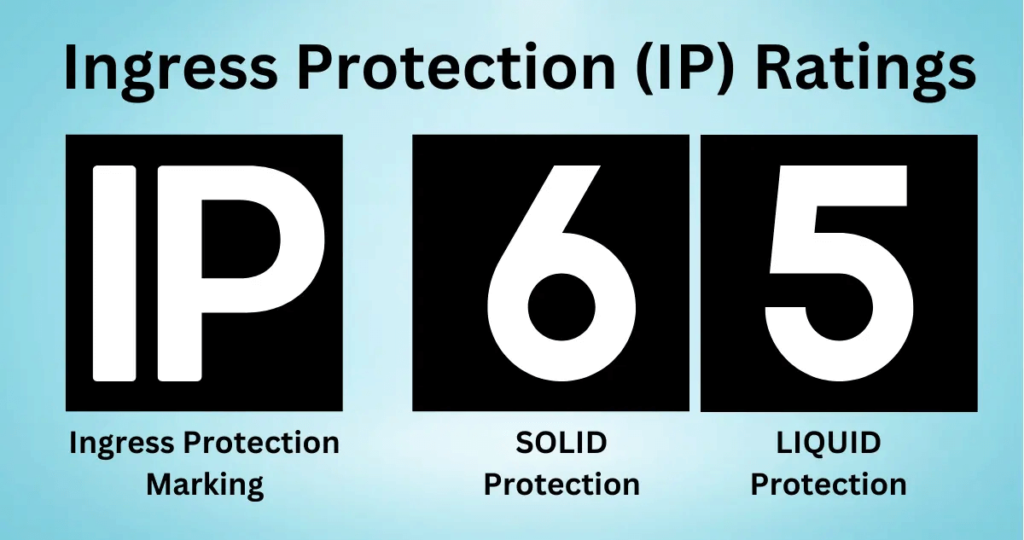
1. Definition: The IP Rating, Your Gadget’s Bodyguard
Ever wondered how your phone survives that accidental splash or why your fancy smartwatch doesn’t die after a sweaty workout? Meet the IP (Ingress Protection) Rating, the unsung hero of waterproofing. This magical code is slapped onto all sorts of electronic gadgets and gear, ensuring that dust, dirt, and H2O don’t wreak havoc on your beloved tech. From smartphones to high-tech lights, the IP rating is your device’s way of saying, “I got this.”
2. Purpose: A Universal Safety Score for Your Electronics
The purpose of the IP rating system is to save your gadgets from a dusty demise or a watery grave. It’s like the ultimate Yelp review, but for how well your device handles the real world. This two-digit code gives you a standardized measurement—so no guesswork is required. One number tells you how much solid stuff your device can keep out (dust, dirt, curious fingers), while the other tells you how well it laughs off the water, from drips to full-on dives. Think of it as an insurance policy against life’s messes.
3. Origin: The Global Standard for Keeping Your Tech Alive
Now, where did this clever little system come from? Well, the International Electrotechnical Commission (IEC), of course. These brainy folks developed the IP rating system, giving your electronics a worldwide passport to durability. Recognized across the globe, this system lets consumers everywhere know just how tough their gadgets are—whether you’re in a Sahara sandstorm or a rainy day in London. Thanks to the IEC, you no longer need to cross your fingers and hope your phone survives your latest adventure.
Understanding Waterproof IP Rating
1. IP Code: The Two-Digit Shield of Glory
Let’s talk about the IP Code—your device’s superhero alias, only it’s made up of numbers instead of capes. This two-digit marvel is your gadget’s way of flaunting how well it can ward off the evil forces of dust, dirt, and drenching liquids. The first digit? That’s all about solid stuff—like preventing tiny, poking fingers from messing with your tech’s insides. The second? Water. From mist to torrential downpours, this number tells you just how much H2O your device can shrug off before it calls it quits. Together, these digits are the ultimate security detail for your gear, ensuring it survives life’s messy moments.
2. First Digit: The Bouncer for Solid Stuff
Now, that first digit is no joke. It’s the muscle at the door, keeping out all the unwanted riffraff. If your device has a high first digit, it’s saying, “Dust? Never heard of her.” The scale goes from 0 (which means the gadget is a welcome mat for solids) to 6 (where dust doesn’t stand a chance). Whether it’s keeping out sand during your beach day or protecting those delicate insides from errant screws in your workshop, this digit is all about solid object security.
3. Second Digit: Water’s Worst Nightmare
And now, the second digit—the true warrior when it comes to moisture. If your device has a low number here, it might flinch at a drizzle. But with a higher number, your gadget can shake off water like it’s no big deal, all the way up to surviving a deep dive in the pool. Whether your device is up against a splash from a rogue fountain or the full wrath of a downpour, this digit tells you how well it can keep its circuits dry. From “it’ll survive a drip” to “go ahead, take a swim,” the second digit is the ultimate water-wrangler.
Together, these digits form the ultimate defense system, letting you know just how ready your tech is for the real world—dust storms, rain showers, and all.
Components of Waterproof IP Rating
1. Two-Part System: Solids vs. Liquids Showdown
Добро пожаловать в two-part showdown that is the IP rating system—where solids and liquids battle for supremacy! But don’t worry, your gadget comes out the winner every time. The first digit in this two-number combo is all about the solids—dust, dirt, pebbles, and all those tiny invaders looking to sneak inside your tech. The higher the number, the tighter the fortress walls, keeping out everything from massive screws to microscopic dust particles.
The second digit? Oh, that’s where the liquid defense comes into play. Whether it’s a light sprinkle or a full-on dunking, this number shows how much your device can handle without turning into an expensive paperweight. The higher the digit, the more your gear can mock the elements. Together, these two digits are like a personal security team for your gadgets, fending off both dry and wet attacks with ease.
2. Standardization: Waterproofing for the Ages
But it’s not just about protection—it’s about standardization. The IP rating doesn’t just help you understand how much abuse your electronics can take—it ensures that no matter where you are, your devices meet the same global protection standards. Whether you’re deep in a dusty desert or splashing around a humid rainforest, an IP rating ensures your gear keeps ticking. This system guarantees your device’s waterproofing and longevity aren’t left to chance, but to tried-and-true testing.
Thanks to this universal rating system, companies no longer make vague promises like “water-resistant” or “kind of dustproof, maybe.” With IP ratings, there’s no ambiguity. You know what you’re getting, and your electronics know exactly what they’re up against—whether it’s a minor dust-up or a battle with the elements.
Interpretation of Waterproof IP Rating
1. Format: Cracking the IPXX Code
The IP rating is like a secret code, except it’s not so secret and very useful. The format is as simple as IPXX, where the two X’s are numbers, but don’t let the simplicity fool you. These digits tell you exactly how well your gadget can defend itself against solid intruders and liquid assassins. Think of them as your device’s bodyguards. The first number? That’s the shield against dust, dirt, and any solid bits looking to sneak inside. The second number? That’s all about water—whether your tech can survive a splash or take a deep dive. This code is your roadmap to knowing how tough your electronics are.
2. Protection Levels: More is Better
When it comes to IP ratings, the rule is simple: the higher, the better. A higher number means your gadget can laugh in the face of more extreme conditions. Got a 0 for the first number? Your device is practically saying, “Come on in, dust!” But if you see a 6? Dust doesn’t even stand a chance at infiltrating those defenses. The second digit works the same way. A 0 here? Steer clear of water, even that drizzle. But if you spot an 8? Congratulations, your device can handle full-on submersion, probably sipping on an umbrella drink while it’s at it.
3. Example: IP68—The Ultimate Protection Powerhouse
Let’s talk about the IP68 rating, the gold standard of gadget protection. The 6? That means nothing’s getting in—dust, dirt, solid particles—it’s like your device has a force field. And that shiny 8? Oh, that means water doesn’t stand a chance, even if your device decides to take a leisurely swim. Whether you’re caught in a torrential downpour or your phone takes an unexpected dip in the pool, IP68-rated gear just shrugs it off. Complete protection against the elements? Check. All systems go? Absolutely.
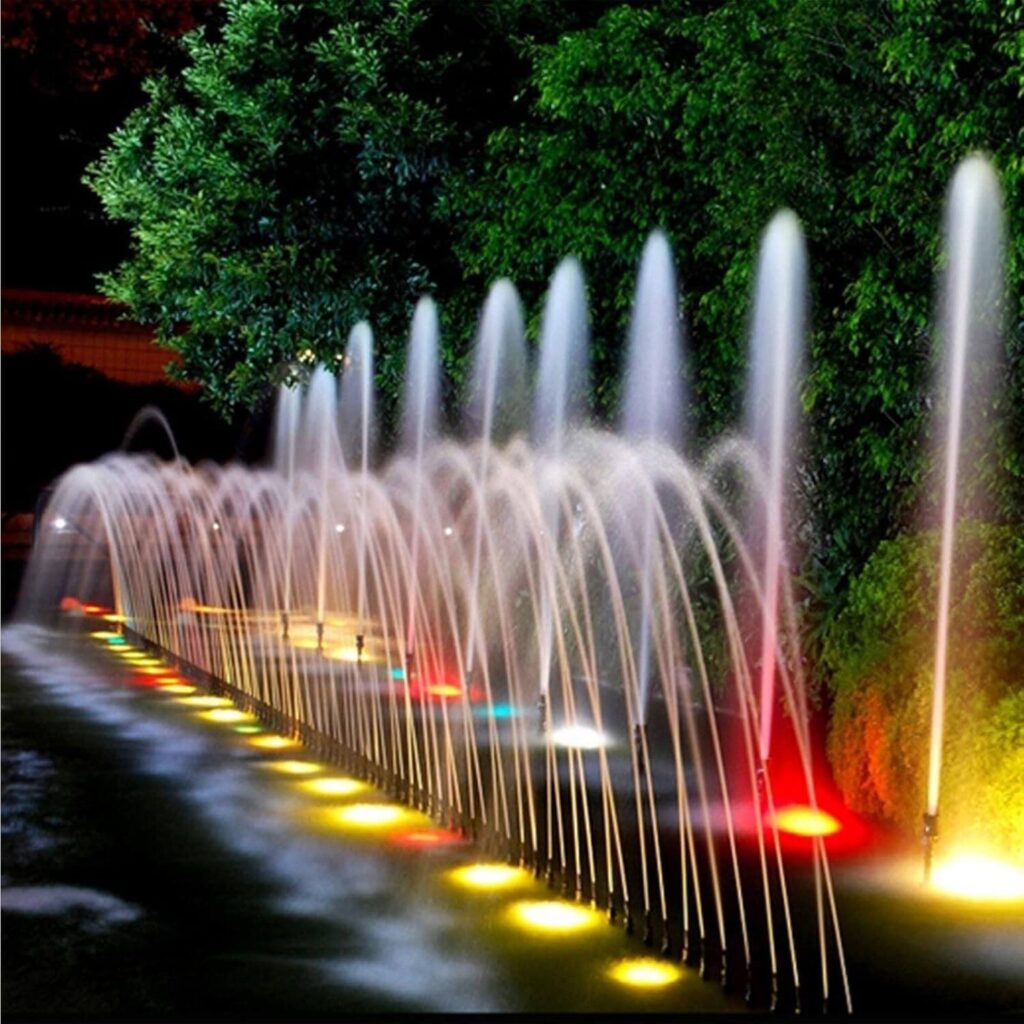
B. Практические соображения для различных комнат и мероприятий
Выбор температуры освещения должен соответствовать конкретным функциям комнаты и выполненным там действиями. Например, теплое освещение (2700K-3000K) идеально подходит для мест, предназначенных для расслабления, таких как спальни, гостиные и столовые. Уютное сияние помогает развивать привлекательную и спокойную атмосферу, идеально подходящую для заморожения после долгого дня.
Нейтральное освещение (3500K-4000K) выдерживает баланс между теплом и яркости, что делает его подходящим для таких мест, как кухни, ванные комнаты и домашние офисы. Эти пространства требует достаточно света для видимости и выполнения задач, но тон не слишком резкий. Нейтральное освещение предлагает ясность без резкости прохладного освещения, что делает его универсальным для комнат, которые выполняют несколько функций.
Прохладное освещение (5000K-6000K) часто зарезервировано для помещений, которые требуют высокой видимости и фокуса, таких как рабочие места, гаражи и открытые площадки. Он также используется в средах, где точность и внимание к деталям имеют решающее значение, как лаборатории или художественные студии. В то время как прохладное освещение может быть резким при чрезмерном использовании, необходимо для задач, которые требуют концентрации и точности.
C. Концепция расслоения освещения для универсальных посредников
Слоирование освещения является важной стратегией для достижения универсальности и глубины в атмосфере комнаты. Эта концепция включает в себя сочетание различных типов освещения - амбулатора, задачи и акцентного освещения - для создания сбалансированного и функционального дизайна освещения, который адаптируется к различным потребностям и настроениям.
Освещение окружающей среды служит основным источником света в комнате, обычно обеспечиваемым накладными светильниками. Его цветовая температура должна быть выбрана в зависимости от общей цели комнаты; Например, более теплое освещение для гостиной или более прохладное освещение для рабочего пространства. Освещение задач, такое как светильники на кухне или лампы для чтения в исследовании, обеспечивает целенаправленное освещение для конкретных действий. Этот слой часто пользуется более прохладным освещением, поскольку он повышает видимость и уменьшает штамм глаз. Акцентное освещение, такое как прожекторы или декоративные лампы, добавляет тепло, глубину и визуальный интерес к комнате. Как правило, акцентное освещение мягче и теплее, выделяя архитектурные особенности или произведения искусства, не подавляя пространство.
Раскладывая эти различные типы освещения и температуры, домовладельцы могут создавать гибкую среду, которая обслуживает различные функции и настроения. Например, тушеные светильники или регулируемые приспособления могут перевести пространство от яркого, ориентированного на задачи освещения в более расслабленную и интимную обстановку, обеспечивая широкий спектр вариантов атмосферы в течение дня. Эта адаптивность делает температуру освещения и наслоение важными соображениями в современном дизайне интерьера.
The Importance of IP Systems
1. Standardization: One Code to Rule Them All
Imagine trying to compare waterproof gadgets without a universal standard. Absolute chaos, right? The IP system swoops in like a superhero with a cape of logic. It offers a consistent way to measure protection against water, dust, and even curious fingers. With its two-digit system, the IP rating is the global language of durability, ensuring that no matter where you are, you’re not left guessing if your device will survive a splash or a sandstorm. Standardization isn’t just a fancy word—it’s the unsung hero of device protection.
2. Consumer Decisions: Because Buying Waterproof Stuff Shouldn’t Be a Gamble
Ever bought a gadget that claimed to be waterproof, only to find it drowning in the first drizzle? Yeah, we’ve all been there. But with the IP rating, there’s no more rolling the dice when shopping for waterproof products. Whether you’re in the market for a smartphone that can survive your next poolside photo shoot or a light fixture that laughs in the face of rain, the IP rating ensures you’re not just trusting vague marketing promises. It puts the power back in your hands, letting you make smart, informed decisions. Say goodbye to buyer’s remorse, and hello to gadgets that do what they say on the box!
Choosing the Appropriate Lighting Fixture
1. Suitability: Is Your Light Ready for Battle?
Not all lighting fixtures are cut out for the same battlefield. Whether it’s the steamy embrace of a bathroom or the gritty chaos of an industrial factory, the IP rating is your lighting’s resume. A fixture destined for a damp location needs more than good looks—it needs grit, the kind that keeps water droplets and dust particles at bay. Think of the IP rating as the guardian, ensuring your lights are equipped for whatever environment they face. Industrial setting? No sweat (literally), the right IP rating will handle the grime like a pro.
2. Safety: Because Nobody Wants a Shocking Surprise
Dust and water—a terrible combo for a light fixture. One wrong move, and bam, you’ve got an electrical malfunction or, worse, an accidental electrocution. That’s where the IP rating becomes the silent protector. It ensures your fixture is fortified against dust sneaking in and liquids causing chaos. By choosing the right IP-rated light, you’re not just picking illumination—you’re securing peace of mind. Safe, reliable, and shockingly (pun intended) effective at keeping everything in working order.
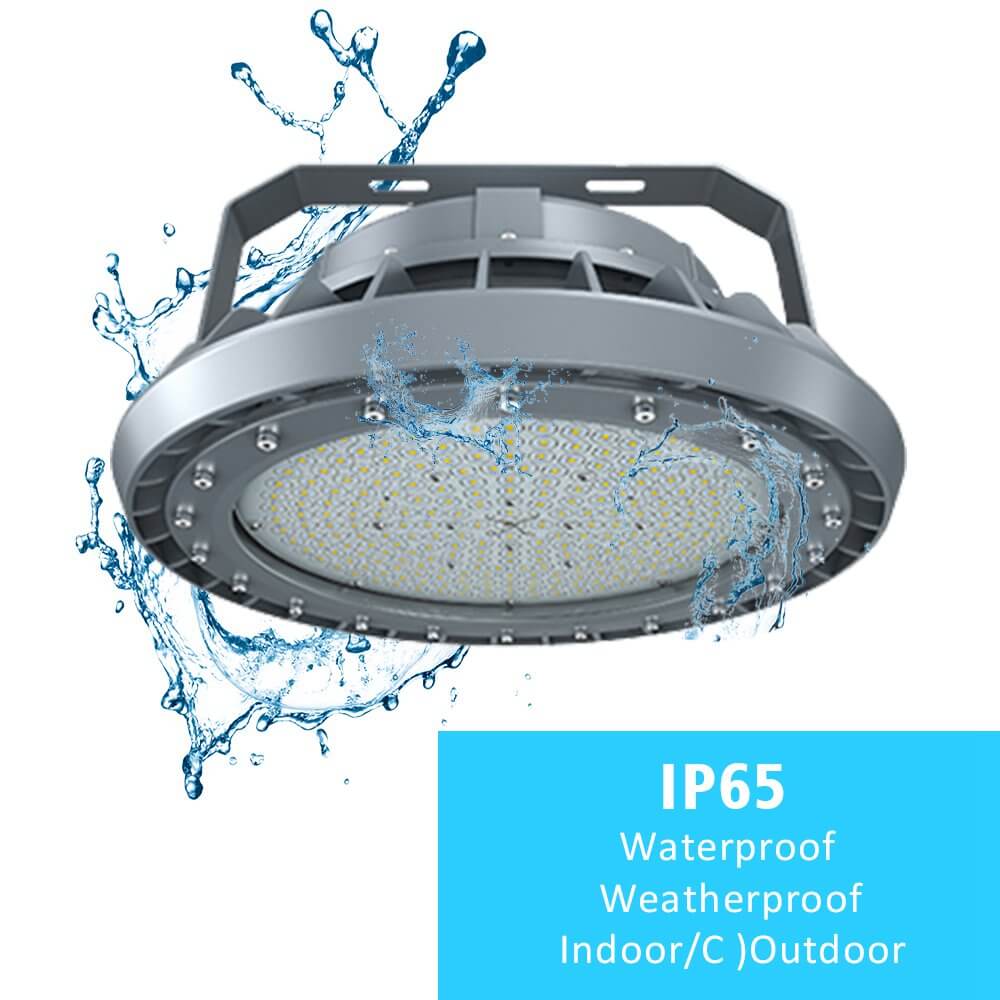
Details of Longevity and Functionality
1. Performance: The Light That Keeps on Shining
Choosing the right light fixture is like picking the right teammate—get it wrong, and you’re in for a world of frustration. The right fixture doesn’t just light up a room; it keeps doing it, day after day, without a flicker or a fuss. With the correct IP rating, your light won’t just survive—it’ll thrive. It stays bright, functional, and unfazed by dust or water, giving you peace of mind and your fixture a well-deserved long lifespan. Because when you invest in quality, it pays dividends—brilliance that stands the test of time.
2. Budget: The Hidden Cost of Cheap Fixes
A low-quality fixture might save you a buck upfront, but be ready to pay for it later—again, and again. Constant replacements? Costly repairs? Yeah, that’s what you signed up for when you ignored the IP rating. Opt for the right fixture from the start, and you’ll find your budget suddenly has a lot more breathing room. Higher IP-rated fixtures offer resilience, meaning fewer breakdowns, less maintenance, and a happy wallet in the long run.
3. Productivity: Let There Be (Good) Light
Dim, faulty lighting isn’t just an eyesore—it’s a productivity killer. Imagine workers squinting at labels, missing details, or moving cautiously because, well, they can barely see! Bad lighting drags down efficiency like an anchor on a speedboat. On the other hand, the right fixture can turn productivity up a notch, brightening workspaces and minds alike. When everything is visible, everything moves faster. Illuminate your space right, and watch the results shine through.
Creating an Industry Standard
1. Universal Standard: The Global Language of Waterproof
Let’s face it—shopping for products internationally without a universal standard is like trying to solve a puzzle with half the pieces missing. Enter the IP rating, the superhero of simplification! With this handy-dandy system, buying a waterproof light fixture in Tokyo is just as easy as in Toledo. No more scratching your head over foreign jargon or wondering if a product can handle a little splash. The IP rating is your worldwide passport to clarity, making international purchases as breezy as a seaside stroll.
2. Consumer Protection: Shielding You From Sneaky Sales Tricks
Ah, the art of marketing—a world filled with vague promises and technical jargon that could easily trip up even the savviest shopper. But fear not! The IP rating has your back, ensuring that every product’s durability is tested and true. No more relying on flowery descriptions that sound too good to be true. This standardized system keeps everyone in check, so you don’t get hoodwinked by misleading claims or second-rate products. It’s like having a watchdog that speaks fluent waterproof, guiding you to make decisions you won’t regret.
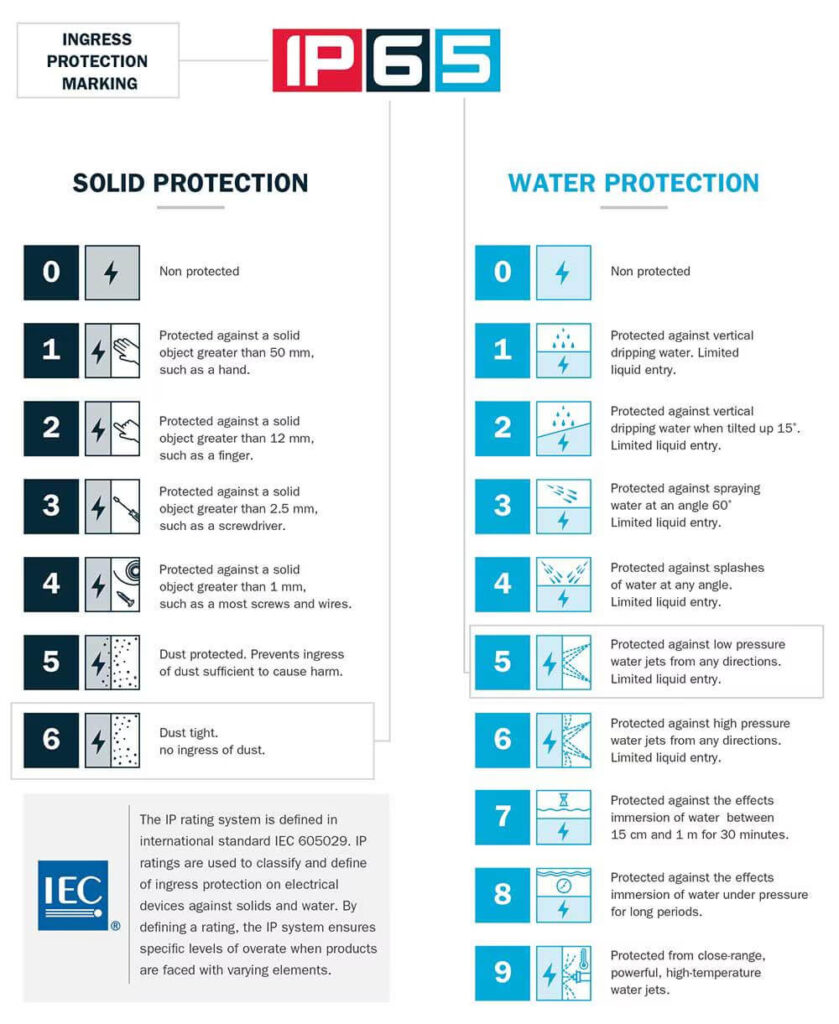
Waterproof IP Rating Categories
A. IP Rating for Solids: The Dust-Busting Scale
Let’s talk dust. Yes, that sneaky little particle that loves to make its way into every crevice. The IP rating for solids uses a handy numerical scale from 0 to 6 to let you know just how much protection your device has against these unwelcome guests.
- 0: “Dust? Come on in!”—No protection whatsoever.
- 1: Only the bigger stuff like hands or tools are kept out.
- 2: Protects against sneaky fingers—literally.
- 3: Small tools, wires, and other pokey things can’t get through.
- 4: Now we’re talking. Protection against objects larger than 1mm—like screws or tiny bits of debris.
- 5: Dust protected, but not invincible. A bit of dust might slip in, but it won’t mess things up.
- 6: The ultimate fortress—dust-tight. Not a single particle can breach this defense.
| First Digit (Protection Against Solids) | Description |
|---|---|
| 0 | No protection against solids. |
| 1 | Protection against solid objects over 50mm in diameter (e.g., large tools, hands). |
| 2 | Protection against solid objects over 12mm in diameter (e.g., fingers). |
| 3 | Protection against solid objects over 2.5mm in diameter (e.g., small tools, wires). |
| 4 | Protection against solid objects over 1mm in diameter (e.g., small wires, screws). |
| 5 | Dust protected – minimal dust ingress allowed, no effect on performance. |
| 6 | Dust tight – no ingress of dust. |
B. IP Rating for Liquids: The Water Warrior Code
Water and electronics—historically not the best of friends. But with the IP rating for liquids, you can find out just how much moisture your device can handle before it taps out. This scale goes from 0 to 8, ranging from a light sprinkle to deep-sea diving.
- 0: “Water? No thanks.”—Zero protection from liquid.
- 1: A drizzle won’t hurt—protected against vertically falling droplets.
- 2: Tilt it 15 degrees, and it’s still safe from a drizzle.
- 3: A bit of a spray from any direction? No problem.
- 4: Splashes of water? Bring it on.
- 5: Ready for action against water jets—up to a certain pressure.
- 6: Heavy-duty water jets from any direction—this one’s ready for the car wash.
- 7: Short-term dunking, up to 1 meter deep, is no big deal.
- 8: Dive in! Long-term immersion beyond 1 meter is a piece of cake for this one.
| Second Digit (Protection Against Liquids) | Description |
|---|---|
| 0 | No protection against liquids. |
| 1 | Protection against vertically dripping water. |
| 2 | Protection against vertically dripping water when tilted up to 15 degrees. |
| 3 | Protection against water spray from all directions. |
| 4 | Protection against splashes of water from all directions. |
| 5 | Protection against water projected from a nozzle. |
| 6 | Protection against powerful water jets from all directions. |
| 7 | Protection against short-term immersion in water (up to 1m depth). |
| 8 | Protection against long-term immersion in water (beyond 1m depth). |
Your device’s IP rating is its battle armor against the elements, and whether it’s a dust-filled desert or a watery abyss, you’ll know exactly what it can handle!
What’s the Highest Waterproof IP Rating?
1. IP68 Rating: The Elite Bodyguard of Gadgets
IP68 is like the James Bond of protection ratings—suave, untouchable, and always ready for action. When a product flaunts this rating, you know it’s not messing around. It offers total protection against dust, ensuring not a single speck makes it inside. And water? Please. IP68 laughs in the face of immersion. Whether you’re splashing around in the shallows or dunking it into deeper waters, this rating ensures your device remains unphased, making it ideal for the harshest environments. It’s dust-tight, water-resistant, and invincible.
2. IP69K Rating: For When You Need a Device That Can Survive the Apocalypse
If IP68 is impressive, IP69K is its overachieving cousin—built to withstand high-pressure water blasts at scalding temperatures. Imagine your device surviving a firehose aimed directly at it. That’s the kind of protection we’re talking about here. Perfect for environments like industrial kitchens, breweries, or car washes, where not only water but boiling, high-pressure liquid is part of the daily routine. It’s not designed for deep-sea diving, but if you need something that can handle a pressure washer on steroids, IP69K is the protector you need.
In short, IP68 is for the adventurers, and IP69K is for those who work in extreme, high-pressure, no-mercy conditions. Both deliver world-class protection, but only one can handle the heat—literally.
What Is an Waterproof IPX Rating?
1. Focus on Water Protection: A Splash-Proof Superpower
When it comes to IPX ratings, it’s all about one thing: water. The IPX rating is like a specialized swim coach for your devices, measuring how well they perform when things get a little wet. Forget about dust, dirt, or other solid invaders—this rating only cares if your gadget can handle a good soaking. Whether it’s a light sprinkle or full-on water submersion, IPX tells you exactly how much your device can handle before it taps out. Think of it as the ultimate rain check.
2. The IPX Scale: From “Don’t Even Think About Water” to “Bring on the Deep End”
The IPX rating system is simple yet effective, ranging from IPX0 (aka, “water? Nope, don’t even try”) to the almighty IPX8, which gives your device a snorkel and says, “Go live your best life underwater.”
- IPX0: No water protection whatsoever. Even a drop of condensation is too much.
- IPX1: Protected from vertical drips. Think light drizzle, not a torrential downpour.
- IPX2: Still drips, but now the device can be tilted at a 15-degree angle. A small victory.
- IPX3: Splash-proof from all directions. Your device just survived a poolside accident.
- IPX4: Resistant to splashes from any angle. Great for accidental coffee spills.
- IPX5: Strong water jets? No problem. Perfect for a device that gets caught in a surprise monsoon.
- IPX6: Powerful water jets can’t bring it down. Think garden hose on full blast.
- IPX7: Short-term immersion up to 1 meter deep. Your gadget can go for a swim, but it won’t stay underwater for long.
- IPX8: Long-term immersion? Dive right in. This is your go-to for gadgets that live their best lives underwater.
With IPX, you’ll know exactly where your device stands in the great battle against water, whether it’s a gentle sprinkle or a full-on dive into the deep end.
Explanation of Common Waterproof IP Ratings
1. IP65: The Everyday Defender
IP65 is like your gadget’s trusty raincoat, ready to take on a drizzle or a dust storm with confidence. It’s dust-tight, meaning not a single speck of debris can worm its way inside. As for water? It’s not ready for a full-on swim, but low-pressure water jets? Bring ‘em on. Imagine your device laughing in the face of a garden hose or a light spray from every direction. Perfect for outdoor lights, garden gadgets, or anything that might face the occasional splash without a panic attack.
2. IP67: The Underwater Tourist
Step it up a notch with IP67—this rating has serious street cred. Not only is it dust-tight, but it’s also up for a short dip in the deep end. If your device ends up in a meter of water for up to 30 minutes, IP67 is cool with that. It’s like your gadget has a temporary scuba license. Need something to survive an accidental tumble into the pool? Look no further, because IP67’s got your back.
3. IP68: The Deep-Sea Champion
Meet IP68, the ultimate deep diver. It’s not just dustproof; it’s practically amphibious. This rating says, “Water? Pfft, I live for it.” Whether your device is submerged beyond 1 meter for as long as needed, it stays perfectly intact, like a fearless treasure hunter of the tech world. Ideal for those who need their gadgets to perform flawlessly in the harshest, wettest conditions—think underwater cameras, diving gear, or any tech you’re willing to take on a real adventure.
Factors Affecting Waterproof IP Rating
1. Environmental Factors: When Mother Nature Decides to Test Your Gear
Let’s face it—your gadget is only as good as its ability to withstand the world’s chaos. Whether it’s a sandstorm in the Sahara or a tropical downpour, the environment throws everything it has at your precious device. When choosing an IP rating, you need to think about where your gadget will call home. Is it going to live in a humid rainforest, a dusty warehouse, or the depths of your local pool? The right rating can mean the difference between a gadget that laughs at nature’s fury or one that curls up and quits at the first raindrop.
2. Type of Equipment: Not All Gadgets Are Created Equal
A flashlight and a high-tech security camera are like apples and oranges. You wouldn’t slap the same IP rating on both, would you? Different types of equipment require different levels of protection. A handheld device that gets tossed around in the great outdoors will need a higher IP rating than, say, a computer tucked away in an office. Think about what your gear is up against—an industrial worksite, a construction zone, or maybe just your clumsy hands. The equipment’s role determines the level of defense it needs, and the IP rating helps you arm it accordingly.
3. Quality of Materials: The Armor That Makes or Breaks It
Here’s the thing: not all materials are born equal. Some are as tough as nails, while others… well, let’s just say they fold faster than a paper umbrella in a hurricane. The materials used in your product’s construction play a massive role in its IP rating. High-quality, waterproof materials give your gadget the extra muscle it needs to keep out dust, water, and other environmental nasties. Cheap materials? Expect them to crack under pressure—and we’re talking literal pressure here. If you want your device to be a fortress, make sure it’s built like one.
Importance of IP Rating in Waterproofing
1. Protection from Water Damage
Water and electronics don’t mix, and they’re not even trying to hide it! The IP rating system is your trusty translator in this turbulent relationship, giving you the real scoop on how well your gadgets handle a splash or two—or a monsoon. Think of it as the international passport for your tech’s underwater adventures. It’s a standardized, globally recognized way to measure just how much your equipment can endure in the face of dust, rain, or even the occasional accidental dunk. From devices that barely tolerate a drizzle to those that can moonlight as submarines, the IP rating is your key to knowing which ones can withstand whatever watery drama life throws their way.
2. Improved Durability
Who doesn’t love a good long-lasting relationship? Well, the IP rating is like the “forever” promise between your device and its surroundings. Higher IP ratings are the hallmark of gadgets that are built tough, ready to stare down the elements and come out unscathed. Whether it’s relentless dust storms or torrential downpours, those big numbers in the IP rating signify a device that’s built for the long haul. This means fewer short circuits, less internal corrosion, and a gadget that’ll be your trusty sidekick long after your warranty expires. It’s like the difference between a weekend fling and a lifelong commitment—only less emotional and way more practical.
3. Cost Savings
Ah, money. We all want to save it, but constant repairs and replacements for water-damaged devices have a way of bleeding your wallet dry. Enter the IP rating, your financial knight in shining armor. With higher IP ratings, you can wave goodbye to frequent gadget graveyards and expensive replacements. Your equipment stays in top form, dodging water and dust with grace, meaning less downtime and fewer repair bills. Plus, knowing your devices are protected gives you peace of mind. In the end, investing in the right IP-rated product isn’t just smart—it’s downright economical.
Choosing the Right Waterproof IP Rating
1. Environment: When Weather Gets Personal
You wouldn’t wear a parka to the beach, right? The same logic applies to choosing the right IP rating for your devices. It’s all about knowing the environment. Will your tech be braving the elements like a fearless outdoor warrior, or relaxing in the safe haven of your living room? A dusty warehouse, a steamy kitchen, or a torrential downpour-prone construction site all demand different levels of protection. High moisture? Look for an IP rating that’s ready for a monsoon. Dusty surroundings? Your gadget needs a forcefield against rogue particles. So before you hit “buy,” picture where your device is headed, and make sure it’s dressed appropriately.
2. Industry Standards and Regulations: Because Rules Matter (Sometimes)
In some industries, it’s not just about what you want—it’s about what you must have. If you’re in a field where safety and compliance reign supreme, the IP rating isn’t just a suggestion—it’s the law. Certain industries require specific protection levels to meet regulatory guidelines. Whether it’s keeping your electrical panels safe from water in a food processing plant or safeguarding critical machinery in a dusty factory, adhering to these standards isn’t optional. It’s your ticket to avoiding fines, keeping workers safe, and making sure the equipment actually functions under pressure.
3. Budget: The IP Balancing Act
Let’s face it, we all dream of gadgets that could survive the apocalypse. But those rugged, nearly indestructible products come with a price tag to match. A higher IP rating may feel like the Holy Grail of protection, but you’ve got to balance it with your budget. Is that IP68-rated light fixture really necessary for your cozy living room, or are you paying for submarine-level protection when all you need is drizzle-proof? Weigh the cost against the conditions your device will face. Sometimes, a moderate IP rating will do just fine—and your wallet will thank you for it.
IP Zones in Bathrooms
1. Zone 0: The Bathtub Deep End (IP67 Minimum)
Welcome to Zone 0—the splash zone’s splashiest! This is where your lights are practically swimming. We’re talking about the interior of your bathtub or shower, where they’ll be in direct contact with water. Any lighting fixture here must be as watertight as a submarine. IP67 is your baseline, meaning it can withstand full immersion. So, unless you want a light fixture that doubles as a hazard, stick to the rules. After all, no one wants to mix a bubble bath with a light show gone wrong.
2. Zone 1: The Steamy Heights (IP65 Minimum)
Just above the sudsy depths of Zone 0, we enter the steamy realm of Zone 1. This area stretches up to 2.25 meters above your tub or shower, right where steam loves to hang out. Here, your lights still need to be tough but maybe not scuba-ready. An IP65 rating will suffice, offering protection against water jets and rogue splashes. Imagine it as a raincoat for your lights—keeping them dry while you belt out your best shower ballads.
3. Zone 2: The Splashy Periphery (IP44 Minimum)
Zone 2 is the not-so-wet zone, extending horizontally about 0.6 meters from the edges of Zone 1. It’s where you’re likely to get the occasional mist or splash. IP44 is your go-to here—meaning it’s protected against water splashes but doesn’t need to survive a full-blown downpour. Think of it like an umbrella: useful when the weather’s mild, but not built for a hurricane.
4. Zone 3: The Dry Zone (No Specific Requirement)
Now we step into Zone 3—the safety zone, where things finally dry out. Located outside the boundaries of Zones 0, 1, and 2, this area is less water-prone and more forgiving. Here, there’s no specific IP requirement, so you can relax and go for lower-rated fixtures. However, it’s always a good idea to have at least IP20 to protect against dust or wandering fingers. Just because it’s dry doesn’t mean you should let your guard down entirely!
Examples of Waterproof IP Ratings for Lighting
1. Home and Security Lighting: Bright Ideas for a Safer Home
Let’s talk about home lighting—the cozy indoor glow that turns your house into a safe haven. Here, IP ratings are your silent bodyguards, protecting against the odd dust particle or splash. For standard indoor setups like living rooms and bedrooms, an IP20 rating is plenty. This shields against solid objects larger than 12.5mm (goodbye, curious toddler fingers) and is perfect for areas where moisture isn’t a major player.
Now, if you’re thinking about security lighting—the kind that makes burglars reconsider their life choices—you’ll need to step it up. For outdoor security lights, IP44 is a solid choice. It’s built to endure splashes of rain or the occasional storm, ensuring your security system doesn’t flicker out just when you need it most. And if your outdoor lights face harsher elements, an IP65 rating is the way to go. This offers protection against all the dust and strong water jets Mother Nature can throw, keeping your perimeter bright and safe.
2. Path and Garden Lighting: Brightening Your Nature Walks
Ah, the great outdoors—where path and garden lighting not only guide your way but also add that magical touch to your evening strolls. But here’s the thing: plants love water, and so does the sky. Your lights, not so much. For path lighting that’ll see a lot of foot traffic and dust, aim for an IP65 rating. It’s dust-tight and can shrug off water jets like a duck with a raincoat. Whether rain or shine, this rating ensures your lights will glow on without a hitch.
In more sheltered garden spots—like under a gazebo or nestled beneath leafy canopies—you can dial it back to IP54. This rating keeps splashes at bay while offering solid protection against dust. So, no need to worry if the garden hose gets a little too enthusiastic. If you’re placing lights in fully exposed, open-air areas, where torrential rain might strike, bump it up to IP67 or IP68. These are your storm-proof warriors, ready to tackle anything from heavy downpours to temporary submersion in water. Lights that stay glowing, even when the clouds burst? Now that’s what you need for a well-lit wonderland!
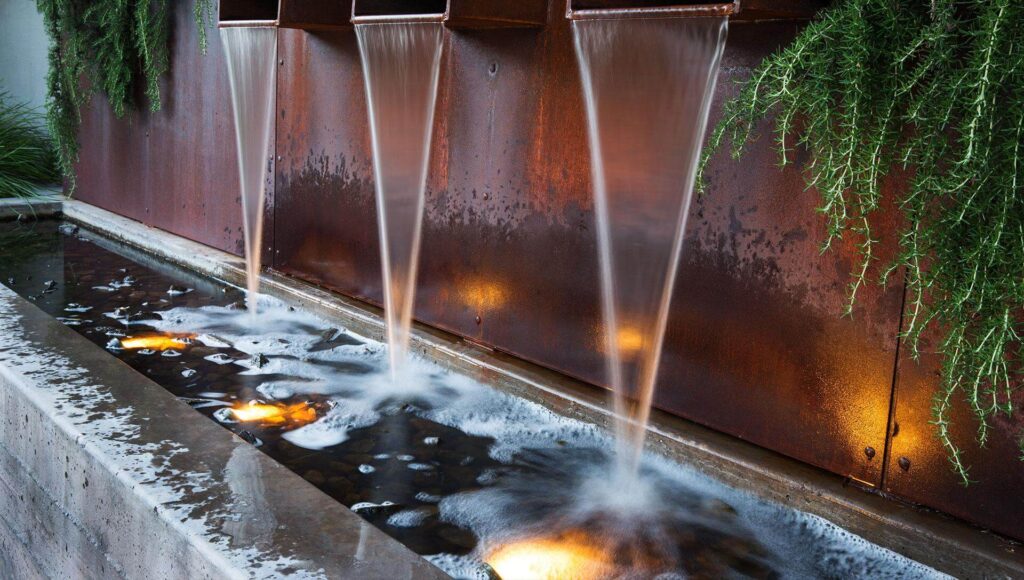
Differences in Waterproof IP Rating of High Bay Lights
1. IP20 or IP22: Dust? What Dust?
When it comes to indoor environments where dust and moisture are about as rare as a unicorn, IP20 or IP22 will do the trick. These ratings are perfect for places like offices, gyms, or warehouses where lights aren’t exactly fighting off the elements. With these, your high bay lights are protected from solid objects bigger than 12.5mm (like, say, wandering hands), but don’t expect them to be particularly water-resistant. Think of them as your fair-weather friends—great indoors but not the ones to invite to a pool party.
2. IP44 or IP54: Ready for a Little Splash
Now, let’s step up the protection for environments where moisture occasionally likes to drop by uninvited—like a kitchen or bathroom. IP44 or IP54-rated high bay lights offer solid protection against dust and splashes of water. Picture them as your lights in raincoats. They can handle a bit of water, but don’t go pushing them into the deep end. These are ideal for indoor settings where you might encounter steam, humidity, or a splash of something you’d rather not explain.
3. IP65: Ready for the Outdoors
If your high bay lights are braving the great outdoors, or you’re installing them in a high-humidity indoor environment like a greenhouse, IP65 is your go-to rating. With this level of protection, they’re completely dust-tight and can handle water jets from any direction. Translation? These lights can face down a storm and come out shining. They’re built for outdoor installations or steamy, water-heavy environments, where your lights need to hold their ground and not get washed away—figuratively or literally.
4. IP67: Take a Dip, No Problem
Now we’re talking serious protection. If your high bay lights are in an area prone to flooding or need to withstand temporary immersion in water, IP67 is what you need. These lights can be submerged up to a meter deep for short periods without turning into expensive fish food. They’re perfect for locations that occasionally flirt with disaster—think outdoor spaces where heavy rain could lead to temporary pooling or indoor areas prone to accidental drenching.
5. IP68: Submarine-Level Endurance
IP68-rated high bay lights are your hardcore, all-weather warriors. These are the guys you call when your lights need to withstand constant water submersion, whether that’s in a fountain, a pool, or an environment where being underwater is the norm. They’re built to last in extreme conditions, offering the highest level of protection against water and dust. You could practically drop these lights in the ocean, and they’d still shine bright (well, assuming you could find them). Perfect for industrial settings with relentless water exposure or any underwater lighting setup that needs to stay on, rain or… more water.
Other Uses of IP Waterproof Rating
IP Ratings for Everyday Gadgets: Smartphones, Cameras, and More
Waterproofing isn’t just for the gadgets in your bathroom or outdoor lights. Oh no, it goes way beyond that. Your trusty smartphone, the one that’s practically glued to your hand, likely boasts an IP rating too—especially if you’re prone to texting in the rain or accidentally dropping it in the sink. Most modern smartphones carry an IP67 or IP68 rating, meaning they can handle everything from dust storms to accidental dunks in the toilet. Cameras are in the same boat (sometimes literally). Whether you’re snapping pictures in a monsoon or accidentally taking your new DSLR on a snorkeling adventure, that IP rating ensures your camera can survive the elements.
Industrial Equipment: When the Going Gets Tough
Let’s not forget about the industrial powerhouses. IP ratings are a lifeline for heavy-duty equipment that faces harsher conditions than your average household gadget. Whether it’s machinery on a construction site, electrical panels in a factory, or outdoor Wi-Fi routers braving extreme weather, the IP rating tells you just how much dirt, dust, and water they can handle. For industrial equipment, you’re looking at higher IP ratings, often IP65 and above, to ensure that these machines keep humming along no matter what Mother Nature—or the factory floor—throws at them.
Wearables and Outdoor Gear: IP for the Adventurous
Got a smartwatch that tracks your every step, even in the rain or during a swim? Yep, that little gadget is IP-rated too. Most wearables like fitness trackers and smartwatches are designed with IP ratings to keep them functional through sweat, rain, and even underwater workouts. Meanwhile, outdoor adventure gear—think rugged GPS devices and weather stations—relies on high IP ratings to ensure survival in the wilderness. So whether you’re scaling a mountain or just walking through a drizzle, your IP-rated gear has got your back.
Commercial and Medical Devices: Staying Safe and Clean
In the medical and commercial sectors, IP ratings are crucial for devices that need to stay clean and dry. Hospital-grade power outlets, sterilizable medical tools, and weatherproof outdoor communication equipment all rely on their IP rating to operate safely in environments that demand hygiene and durability. A high IP rating not only ensures these devices can withstand the rigors of daily use but also that they don’t fail when lives or business operations are on the line.
Importance of IP Rating for Underwater Lighting Products
1. Safety: No Shocks, Just Shimmers
When it comes to underwater lighting, safety is non-negotiable—because mixing water and electricity is a disaster waiting to happen. An IP rating designed for underwater use (think IP68) ensures that your lights won’t short-circuit or explode in a dramatic display of sparks. This rating acts like a superhero cape, protecting the inner workings from water ingress, which can cause all sorts of problems—malfunction, corrosion, or even a full-blown aquatic light failure. Whether your lights are submerged in a pool, a fountain, or a whimsical koi pond, proper IP-rated lighting makes sure the only shock happening is the beauty of your illuminated water feature, not an electrical one.
2. Performance: Bright Lights, Deep Waters
Let’s be real—no one wants a dim, underwater light barely bright enough to see a fish swim by. The IP rating directly impacts the performance of underwater lights, ensuring they deliver that dazzling glow you’re aiming for. When water finds its way into a light, it’s game over for brightness and clarity. With a high IP-rated fixture, you’re guaranteed optimal lighting effects, without flickering, dimming, or going dark. Think of it like your underwater disco—consistent, bright, and ready to party, no matter how long it’s submerged. The right rating keeps your lights performing like a star, even when they’re buried under a deluge of chlorinated water.
3. Lifespan: Light That Stays the Course
Nobody enjoys constantly replacing underwater lights because they couldn’t handle a little dip. With a high IP rating, you’re ensuring those lights are in it for the long haul. Strong seals, corrosion resistance, and watertight designs mean your lighting system is less likely to fall victim to water damage, short circuits, or early burnout. This not only saves you the hassle of frequent replacements but also protects your wallet from the endless cycle of buying new lights every season. Your underwater lighting should last as long as your admiration for your sparkling pool or fountain. An IP-rated fixture withstanding the test of time guarantees you’ll be basking in its glow for years to come.
What IP Rating Should an Underwater Light Fixture Have?
IP68: The Deep-Sea Warrior of Lighting
If you’re installing lights where the fish swim and the water ripples, your light fixture better be more than just splash-proof—it needs to be fully submersible. That’s where the IP68 rating comes in. This is the heavyweight champion of waterproofing, specifically designed for lights that live life beneath the surface. Whether it’s illuminating a tranquil swimming pool, a bubbling fountain, or a majestic pond, IP68 is the golden standard for underwater fixtures.
An IP68 rating means your lights are completely sealed against dust (so no dirt sneaks in) and can handle long-term immersion in water without short-circuiting or becoming a cozy home for algae. Think of it as the scuba gear for your lighting. These fixtures won’t just survive a dunk—they’ll thrive under continuous submersion.
So, why settle for anything less? With an IP68-rated light fixture, you’re ensuring not only breathtaking underwater aesthetics but also peace of mind. Whether you’re lighting up a serene garden pond or creating a dazzling underwater display in your pool, your fixtures will stay strong and bright, no matter how deep they dive.
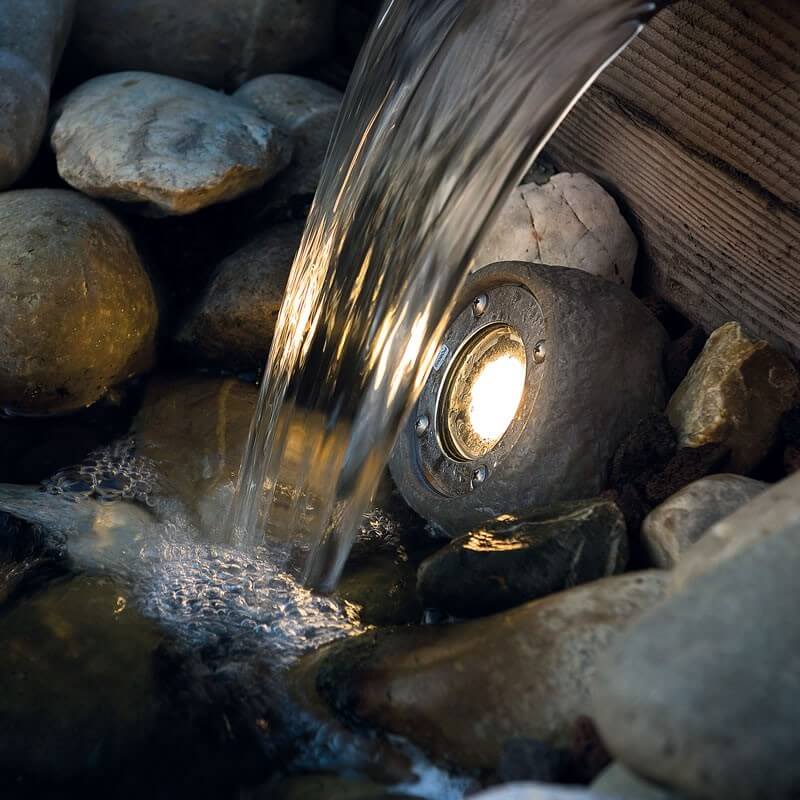
How Are Underwater Lights Waterproof?
Sealed Housing: The Underwater Fortress
Imagine your underwater light as a tiny, glowing fortress. To keep water at bay, its housing is sealed tighter than a drum. No cracks, no leaks, no weak spots—just a perfectly crafted barrier standing between your light and the watery abyss. This sealed housing is the first line of defense, ensuring not a single drop sneaks in to ruin the show. Whether it’s the calm of a koi pond or the splashes of a rowdy pool party, this fortress holds strong, keeping the light burning bright in the depths below.
High-Quality Materials: Built Like a Tank (But Prettier)
Now, this isn’t any ordinary light casing we’re talking about. Underwater lights are made from high-quality, corrosion-resistant materials that laugh in the face of rust and shrug off wear from constant water exposure. Stainless steel, aluminum, and toughened glass are all part of the package, designed to withstand not only water but also the sneaky rays of UV sunlight trying to weaken their defenses. These materials keep your lights shining, even after years of dunking, splashing, and submerged illumination.
Seals: The Watertight Heroes
A house is only as good as its doors, and for underwater lights, the seals are those doors. High-quality rubber gaskets and seals act like bouncers at an exclusive nightclub, making sure no unwanted water molecules get in. These seals are crafted to withstand pressure, whether your light is sitting in a shallow fountain or submerged in a deep pool. They ensure that the inner workings of the light remain bone-dry, so your light can continue glowing like a beacon beneath the waves.
Заключение
Why IP Ratings Matter for Your Products
In the grand saga of gadgets and gizmos, the IP (Ingress Protection) rating reigns supreme. It’s not just a series of numbers slapped on your electronic devices for fun – these digits are the unsung heroes ensuring your treasured tech stays alive and kicking. Think of IP ratings as the personal bodyguards of your products, fending off villains like water, dust, and whatever grimy gunk the world throws their way.
When you know your device is fortified by an IP rating, it’s like strapping armor onto a knight, preparing for battle. This rating doesn’t just boost the device’s longevity; it cranks up the durability, safeguarding its inner workings from the evils of solid invaders (a.k.a. dust and debris) and liquid miscreants (oh yes, water). In short, it shields your tech like a digital fortress.
A Longer Life, A Happier User
Choosing the right IP rating is a bit like picking out a good umbrella. Get one flimsy enough, and you’ll be soaked within seconds. But with the right protection, your device won’t just survive—it will thrive, lasting longer and requiring fewer costly repairs or replacements. That’s more cash in your pocket and less time spent on panicked internet searches for waterproof bags after you’ve dropped your phone into a puddle.
An IP rating guarantees your device can tango with the elements, whether it’s a quick splash, a dust storm, or a fully submerged dive into a pool. Your trust in these numbers equals fewer worries about sudden malfunctions or catastrophic failures. It’s the sort of peace of mind that lets you whip out your phone in a rainstorm without a second thought.
Keep Calm and Buy Confidently
Let’s face it—without an IP rating, you’re rolling the dice with your electronics. But when those numbers are in place, you can buy with swagger, knowing you’ve got certified protection backing up your purchase. Whether it’s an underwater adventure or just a dust-heavy workspace, the IP rating is your product’s certification of survival.
It’s not just about guarding your tech; it’s about guarding your confidence. That tiny two-digit code lets you know your device is battle-tested, ready for whatever real-life conditions you throw at it. So the next time you shop for gadgets, give that IP rating a wink, because it’s more than just a number—it’s the ultimate trust fall for your technology.
Durability and Dependability Delivered
Products built with high IP ratings don’t just last—they endure. They’re engineered to brave the elements, deflecting dust, dodging water, and laughing in the face of hostile environments. It’s this level of durability that saves you money, time, and the sheer annoyance of dealing with malfunctioning tech. With the right IP-rated product in hand, you’ve got a dependable sidekick that’s here for the long haul, no matter what the elements dish out.
In short, the IP rating isn’t just a technical specification—it’s the key to ensuring your beloved devices perform at their peak, live longer, and do it all while making you look like a savvy consumer. Whether it’s a splash, a storm, or just a dirty day at the office, the IP rating has got you—and your gadgets—covered.
